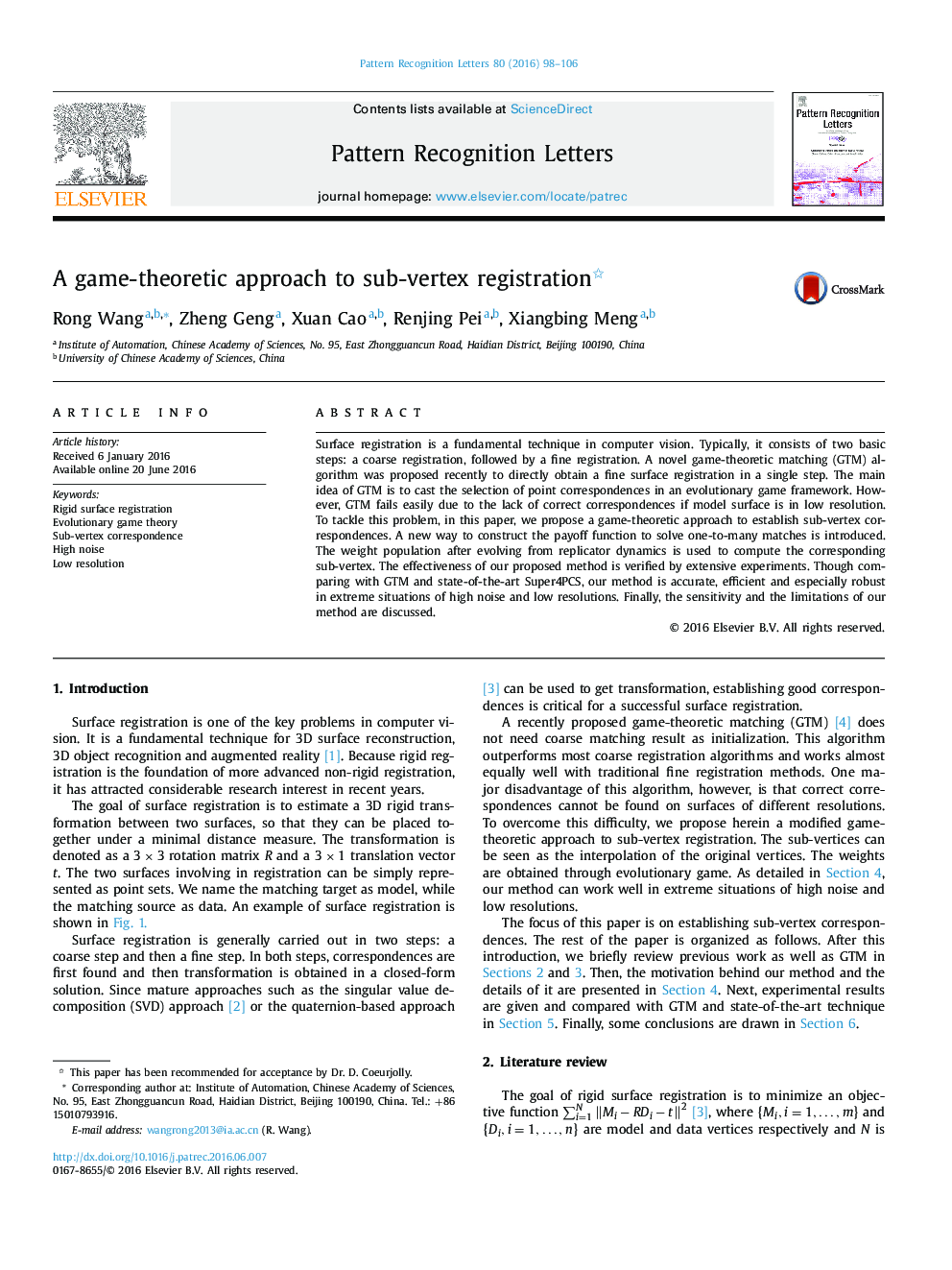| کد مقاله | کد نشریه | سال انتشار | مقاله انگلیسی | نسخه تمام متن |
|---|---|---|---|---|
| 535013 | 870312 | 2016 | 9 صفحه PDF | دانلود رایگان |
• A method to establish sub-vertex correspondences in rigid registration is proposed to overcome the previous work's difficulty.
• The corresponding sub-vertex is computed using the interpolation in the framework of evolutionary game.
• The proposed method is accurate, efficient and robust in extreme situations of high noise and low resolutions.
Surface registration is a fundamental technique in computer vision. Typically, it consists of two basic steps: a coarse registration, followed by a fine registration. A novel game-theoretic matching (GTM) algorithm was proposed recently to directly obtain a fine surface registration in a single step. The main idea of GTM is to cast the selection of point correspondences in an evolutionary game framework. However, GTM fails easily due to the lack of correct correspondences if model surface is in low resolution. To tackle this problem, in this paper, we propose a game-theoretic approach to establish sub-vertex correspondences. A new way to construct the payoff function to solve one-to-many matches is introduced. The weight population after evolving from replicator dynamics is used to compute the corresponding sub-vertex. The effectiveness of our proposed method is verified by extensive experiments. Though comparing with GTM and state-of-the-art Super4PCS, our method is accurate, efficient and especially robust in extreme situations of high noise and low resolutions. Finally, the sensitivity and the limitations of our method are discussed.
Journal: Pattern Recognition Letters - Volume 80, 1 September 2016, Pages 98–106
